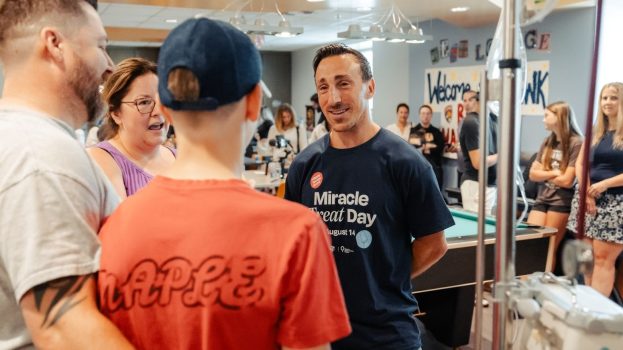
Following the COVID-19 pandemic, showing Canadians that living in a retirement home is a safe option seems like an insurmountable goal to achieve. But Chartwell Retirement Residences is looking to do that by showing the social benefits of living in its communities and communicate to the public that retirement homes more broadly are safer than long-term care facilities.
The “Life is Better, Together” campaign – with creative and media handled by Cundari – consists of a 30-second spot (the primary creative) showing elderly residents socializing with one another, through activities such as sitting on a bench and conversing, having a coffee and playing Jenga.
But in an industry that has been plagued with negative public and media attention in recent months due to the loss of thousands of lives in long-term care (LTC) facilities, one of the biggest challenges for Chartwell has been reminding the public that Chartwell is “a retirement home company, not a long-term care company,” says Sharon Ranalli, VP of marketing and communications at Chartwell.
The Canadian Institute for Health Information grouped LTC’s and retirement homes as one in a June report, when looking at COVID-19 deaths, at which point they accounted for more than 80% of all COVID-19 deaths in the country.
According to information provided by Chartwell, of its more than 200 properties, 90% are considered retirement residences. But Chartwell does own long-term care facilities – and according to data compiled by the CBC, by mid-May, five of the brand’s LTC facilities in the GTA alone were linked to 84 COVID-19-related resident deaths.
At the time, Chartwell released a statement saying that 18 of its 200 residences had faced outbreaks since the pandemic began, and that 12 of those homes had been able to clear the incubation period of the virus without any further infections from when it was first noted. Currently, the company is reporting outbreaks at a facility in Ottawa and one in Mississauga. However, in the case of Cawthra Gardens Long Term Care Residence in Mississauga, the outbreak was limited to a staff member, and safety measures had managed to prevent residence infections, as of last week.
“This reactivating [is] so that people are aware that it’s a safe environment,” Ranalli says, adding that there are social pluses that come with being in a retirement home. “Seniors living alone in their communities, during the pandemic, were alone. Seniors living in a retirement residence were never alone. Even through social-distancing, they had staff and peers. We maintained life-enrichment activities [and] a very positive environment of safety.”
Ranalli highlights services and offers a retirement residence has that can make social distancing easier, like being able to take care of a residents’ medication delivery, or the resident not having to worry about groceries (due to meal services provided).
“The outcomes in retirement living were not the outcomes in long-term care. So it is necessary to help the public understand that they are safe places,” Ranalli says.
Ranalli says the main goal of the campaign is to get move-ins to its facilities going again, since they were allowed to resume in July. According to the company’s Q2 results, same property occupancy declined 4.3 percentage points year-over-year, primarily due to a 67% reduction in move-in activity, partially offset by reduced move-out activity by approximately 28%.
Chartwell had a “major” TV campaign set to launch on Mar. 16, promoting its national open house event, which was paused so the company could adapt all brand content to reassure its residents, family members, staff as well as the public “what the retirement model was” and that they were taking “the right precautions” toward the pandemic.
Chartwell reallocated its spring marketing spend into this campaign, which will run on national TV, with paid digital and social.























